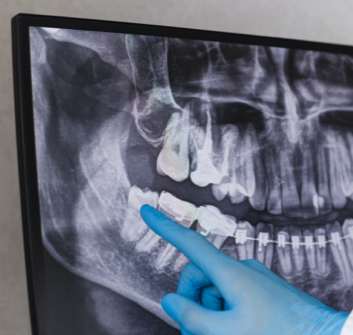Oral Surgery
Minor extractions for teeth in pain or widsom teeth.
Sometimes there may not be room in your mouth for your wisdom teeth and, as they start to come through, they push against the teeth already there or may start to come through at an angle. When this happens, you might feel some pain or discomfort, so the best thing to do is to visit your dentist.
Book My Appointment
The dentist will probably take an x-ray of your mouth to see how – or if – your wisdom teeth are coming through. From this, they will be able to make a judgement on whether or not to take them out, and how easy or difficult it might be. Oral surgery can be provided with sedation for nervous patients.

Having a tooth out is the same as having an operation and, because of this, you must look after the area to speed healing and to reduce the risk of infection. Here are some pointers:
Your dentist may have given you some gauze to place onto the area where the tooth has been removed – if not, a clean cloth handkerchief will do just as well (but not a paper tissue).
What’s included?

The results have been fantastic!
Made a massive impact to my smile - Jo
Really happy with the results! - Nicola


